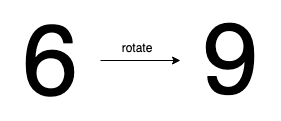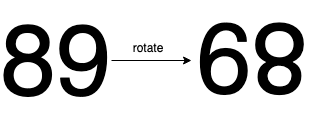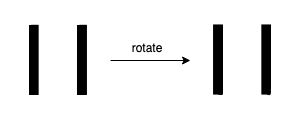1056. Confusing Number
Description
Difficulty: Easy
Related Topics: Math
A confusing number is a number that when rotated 180 degrees becomes a different number with each digit valid.
We can rotate digits of a number by 180 degrees to form new digits.
- When
0,1,6,8, and9are rotated180degrees, they become0,1,9,8, and6respectively. - When
2,3,4,5, and7are rotated180degrees, they become invalid.
Note that after rotating a number, we can ignore leading zeros.
- For example, after rotating
8000, we have0008which is considered as just8.
Given an integer n, return true if it is a confusing number, or false otherwise.
Example 1:

1 | Input: n = 6 |
Example 2:

1 | Input: n = 89 |
Example 3:

1 | Input: n = 11 |
Constraints:
- 0 <= n <= 109
Hints/Notes
- No need to do the mapping, we can use switch during the loop
Solution
Language: C++
1 | class Solution { |